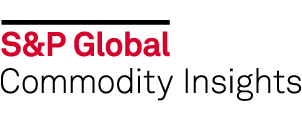
Download Report IHS CEH Report : Adipic Acid (Chemical Economics Handbook 2019)
PDF by S&P Global Commodity Insights; IHS Markit
Information
Format: PDF Language: English Pages: 68 Publisher: S&P Global Commodity Insights; IHS Markit Publitshion date: 2019 ISBN: 92062
$49
Delivery time: Maximum 24 hours
Description
Adipic acid is the monomer intermediate used for production of nylon 66; consumption is driven primarily by the nylon 66 polymer and fiber markets. It is also a widely used dicarboxylic acid in many non-nylon applications, such as polyols for polyurethanes, used in foams, paints and coatings, and adhesives; plasticizers for PVC; and food additives to add tartness and gelatin set. In addition, it also has a variety of other uses, including resins (polyamide-epichlorohydrin [PAE] and unsaturated polyester resins), pharmaceuticals, solvents, flue gas desulfurization, glass protection, leather tanning agents, cosmetics, and detergent tablets. Just under half of the adipic acid production capacity in the world is based on cyclohexane, which is a derivative of benzene. The remainder is mainly from cyclohexene and uncoupled cyclohexanol/cyclohexanone (KA oil), with a small amount based on phenol. In 2018, adipic acid accounted for an estimated 23% of cyclohexane demand and 8% of uncoupled KA oil demand. Adipic acid is used in combination with HMDA in the formation of nylon 66.
Asia, particularly China, has excess capacity that has driven down global operating rates for adipic acid production. By 2023, global capacity for adipic acid will increase by about 135,000 metric tons, almost exclusively in China and the United States, with China accounting for 50% of the capacity increase in 2018. North American capacity declined with the closure of INVISTA’s unit in Orange, Texas in late 2015. Ascend is expected to increase capacity at both of its Pensacola, Florida units by 55,000 metric tons for a total capacity of 645,000 metric tons in 2023. Producers of adipic acid in North America and Western Europe are generally forward-integrated into nylon 66 salt, resin, and fiber production.
Solvay is the largest producer of adipic acid globally, accounting for nearly 14% of the global capacity in 2018. Shandong Hali, Huafon Group, Ascend, and INVISTA complete the top-five list, accounting for a combined share of 61% in 2018. Global capacity for adipic acid is expected to reach over 4.38 million metric tons by 2023, up from the current level of 4.2 million metric tons. The global operating rate was 72% in 2018, and is expected to rise to 78% by 2023.
Global adipic acid consumption is expected to increase to just over 3.4 million metric tons in 2023 for an average annual growth rate of 2.4% during 2018–23. Consumption of adipic acid was around 3.0 million metric tons in 2018, driven mainly by China. Around 54% of the global demand in 2018 was used in nylon 66 production; the remainder was used in non-nylon applications. Asian consumption of adipic acid is larger for non-nylon applications than for nylon 66. By 2023, China will represent 35% of total global consumption, driven by the capacity additions for nylon 66 resins, and other applications of adipic acid. Adipic acid consumption in Western Europe is expected to remain stable through the forecast period, while US demand is forecast to have an average annual growth rate of 2.8% over the next five years.
Global trade in adipic acid represented about 19% of consumption in 2018, with China being the largest exporter, followed by the United States and South Korea. Over the next five years, trade volumes are expected to increase to around 664,000 metric tons in 2023.
Overall, China will continue to have the largest capacity globally, with over 2.1 million metric tons in 2023, followed by the mature players, namely Western Europe and the United States. Chinese exports will increase during the forecast period, resulting in a decline in US exports. The global adipic acid market will be adequately supplied in the forecast years, with consumption growth following the overall trends for nylon 66 end uses.
$49
Delivery time: Maximum 24 hours
